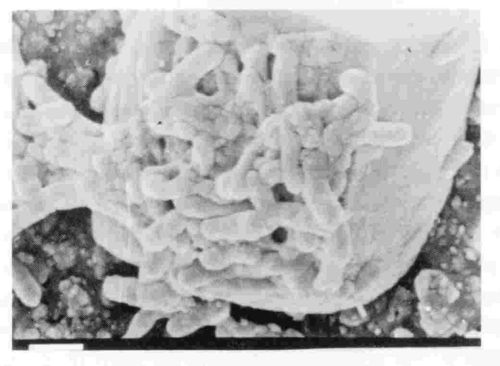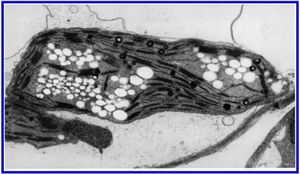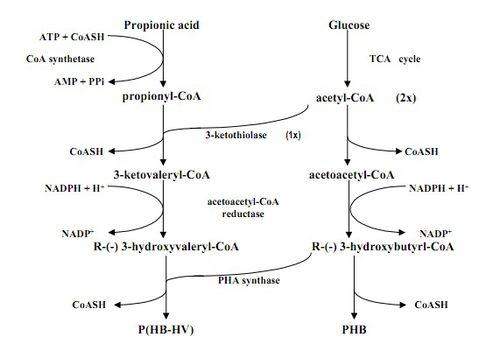Alcaligenes eutrophus
Culture with colonies of Cupriavidus necator on a Agargelmedium
Cupriavidus necator is a type of bacteria from the family of Burkholderiaceae. Previous names are Alcaligenes eutrophus, Ralstonia eutropha, Wautersia eutropha and Hydrogenomonas eutropha.
Characteristics and lifestyle
There are Gram -negative, rod-shaped, single-celled bacteria. They have a diameter of 0.7 to 0.9 microns and a length from 0.9 to 1.3 microns. By two to ten peritrichous flagella they can move. They multiply by binary division.
The bacterium is found in soil and utilized preferably present there nutrients. In the case of a low nutrient content in the soil, it may contain other bacteria, but also fungi and lyse use as a food source, including Agromyces ramosus, Bacillus subtilis, Bacillus thuringiensis, Escherichia coli and Staphylococcus aureus.
Cupriavidus necator, like all species of the genus have a high tolerance to copper, the presence of which stimulates its growth strong.
System
Cupriavidus necator was first described in 1987 as the type species of the genus by NS Makkar and Lester Earl Casida based on a finding in University Park, Pennsylvania. The specific epithet means as much as " killer" and refers to the voluntary killing of other bacteria.
Use
Cupriavidus necator found in the autotrophic nitrate removal from drinking water using hydrogen as an electron donor use. Moreover, it can polyhydroxyalkanoates (PHA ) produce, particularly polyhydroxy butyric acid (PHB ), which is stored in the cells as nutrient and energy reserve when the habitats are very much available for energy utilizable carbon compounds, but in essential nutrients such as nitrogen or phosphorus lacking. Were developed (a subsidiary of ICI) under the brand name " Biopol.RTM " of such cultures by biopolymers produced by Zeneca.
Evidence
- N.S. Makkar, L. E. Casida: Cupriavidus necator Gen. nov, sp.. nov.; a Nonobligate Bacterial Predator of Bacteria in Soil In: International Journal of Systematic and Evolutionary Microbiology, 37:323-326, 1987 PDF Online









